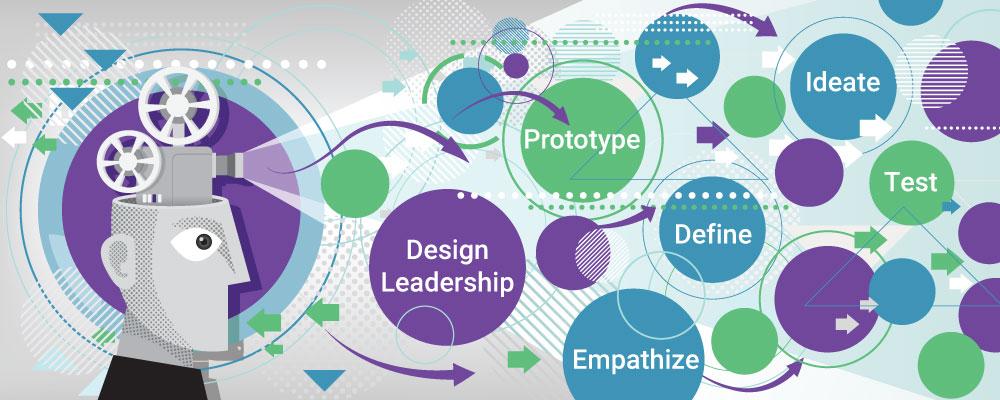
Use Design Thinking to Close More Deals
As a lead designer in our company, I evangelize design thinking and model the behavior of a design thinker. As a career designer, it’s tough for me to not apply design thinking to everything I do. So when our sales team asks me to support the pre-sales process on a prospective customer project, I am as usual in design thinking mode. I’ve found it has a positive impact.
Our own customers know that ICS is excellent at engineering as well as UX design, but they may not realize that we are actively applying design thinking to try to make our services and products, including our sales process, even better for our customers.
Closing the Sale
The challenge of closing a sale is universal. You have a product or service to sell and must find customers that are a good fit for your product or service. Or a potential customer comes to you because they think you might be able to help their business. Together you investigate whether you offer something that fits their needs.
With a good customer fit, your goal is moving the buyer from showing initial interest to signing the contract. The process requires the customer emotionally travel from interest and skepticism to complete conviction.
You want that process to happen with as little investment as possible, or at least the right amount of effort for the potential return. The key is to be efficient and effective.
How do I handle this? My process is very similar to the five-step process articulated by the Institute of Design at Stanford in Introduction to Design Thinking: Process Guide.
If you’re unfamiliar, here’s a crash course:
1. Empathize: know your users and care about them.
2. Define: Frame the right problem to find a good solution.
3. Ideate: Consider a range of possibilities before locking onto one.
4. Prototype: Visualize an idea to learn about it.
5. Test: Learn about your users and their needs.
This process may sound ambitious. After all, this methodology can solve big problems or help you complete a project once you have the sale in hand.
But you still can apply design thinking to a small, short process, whether in a tiny way or in a big way. The process can take 30 minutes or 300 hours depending on the size of the endeavor. You can apply it formally, by creating guidebooks and policies, or you can apply it informally in your everyday action.
That is the beauty of design thinking. It works on almost any problem. Here’s how you can use it to close deals.
Step 1: Empathize with your potential customer
When you make an effort to empathize with a customer you are automatically listening and observing carefully. You are paying attention to their needs and feelings and taking them seriously. Right away your potential customer will feel respected by you and trust you more. They see a reason to continue the conversation.
Step 2: Define the problem they are attempting to solve
So often people don’t bother to clearly state the problem a customer is trying to solve and the customer’s desired outcome. By articulating the problem and goals, with the customer’s input, you reassure them that you understand their needs and goals.
Step 3: Ideate a little
Customers usually try to imagine the solution they want. It’s human nature. Even though they are hiring an expert or product that was created by an expert, there’s a tendency to presuppose a solution. It’s easy to assume that the customer has thought this through and made a wise choice, which is often not the case. More Typically, they’ve arrived at the most obvious, existing solution.
It’s your responsibility as a design thinker to imagine beyond the stated solution to uncover better alternatives. This can occur in a 10-20 minute conversation with a customer. Ask, “Have you thought about doing it this way?” Help your customer see you are offering insight beyond what they can do themselves. Our value as a service provider should be noticeable.
Step 4: Prototype quickly with whatever tools give speedy results
Do a sketch or a quick mockup. The key is to just prototype or visualize the solution by some means. It goes a very long way toward making the customer feel secure and confident that you are taking them seriously. Spending a few hours creating a quick visualization has a magical effect on how impressive the end result can be.
Step 5: Test it on your customer
You are not literally testing with a capital “T” but simply asking for feedback on your prototype. Now you have a point to launch a discussion and an opportunity to understand your customer even better. Ask for feedback and really listen to their comments.
Congratulations! You’ve just modeled a working method with your customer. They’re bound to appreciate your effort because you’ve made it easy for them to end up with a positive outcome.
Design thinking is the hot new thing in business. It’s often talked about as a formal methodology and the examples of its use are often elaborate multi-person endeavors resulting in new initiatives and policies. But design thinking can be applied anytime, anywhere and the results are still powerful.
For more great UX and design leadership content click here.